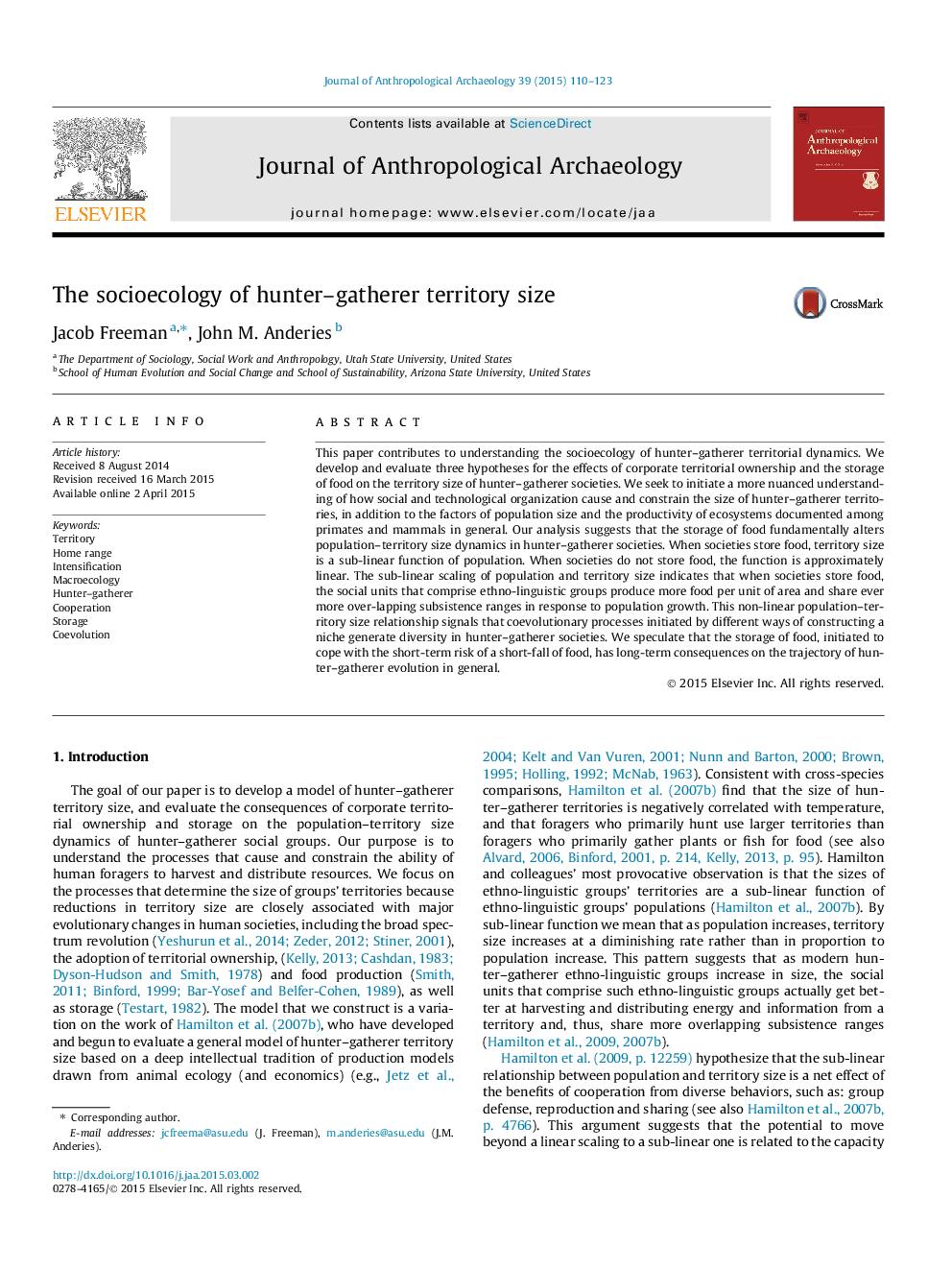| Article ID | Journal | Published Year | Pages | File Type |
|---|---|---|---|---|
| 7440581 | Journal of Anthropological Archaeology | 2015 | 14 Pages |
Abstract
This paper contributes to understanding the socioecology of hunter-gatherer territorial dynamics. We develop and evaluate three hypotheses for the effects of corporate territorial ownership and the storage of food on the territory size of hunter-gatherer societies. We seek to initiate a more nuanced understanding of how social and technological organization cause and constrain the size of hunter-gatherer territories, in addition to the factors of population size and the productivity of ecosystems documented among primates and mammals in general. Our analysis suggests that the storage of food fundamentally alters population-territory size dynamics in hunter-gatherer societies. When societies store food, territory size is a sub-linear function of population. When societies do not store food, the function is approximately linear. The sub-linear scaling of population and territory size indicates that when societies store food, the social units that comprise ethno-linguistic groups produce more food per unit of area and share ever more over-lapping subsistence ranges in response to population growth. This non-linear population-territory size relationship signals that coevolutionary processes initiated by different ways of constructing a niche generate diversity in hunter-gatherer societies. We speculate that the storage of food, initiated to cope with the short-term risk of a short-fall of food, has long-term consequences on the trajectory of hunter-gatherer evolution in general.
Related Topics
Social Sciences and Humanities
Arts and Humanities
History
Authors
Jacob Freeman, John M. Anderies,
